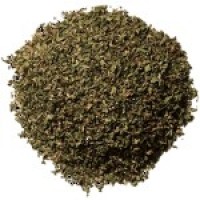Catnip has long been used medicinally as a tea, juice, tincture, infusion and poultice.
Catnip tea is used for headaches, stomachaches, colic and sleeplessness in children. It has also been used to treat cancer, insanity, nervousness, nightmare, scurvy and tuberculosis, while a root extract served as a mild stimulant. Drinking two cups of catnip tea a day could significantly reduce the likelihood of developing cataracts.
Catnip has been employed orally to treat colic, diarrhea, flatulence, hiccups, whooping cough, the common cold, measles and chicken pox (reduces the eruptions), asthma, yellow fever, scarlet fever, smallpox, jaundice and to induce parturition and encourage menstruation.
Poultices were used for hives, sore breasts of nursing mothers and to reduce swelling. A poultice of catnip and other herbs was employed to treat aching teeth in the Ozark Mountains.
A tincture makes a good friction rub for rheumatic and arthritic joints and, as an ointment, to treats hemorrhoids. Catnip was sometimes smoked to relieve respiratory ailments. The fresh leaves can also be chewed for headache and as a remedy for toothache.
It is an old home remedy for colds, nervous tension, fevers and nightmare. It is diaphoretic and antispasmodic. Fresh catnip leaves are preferred for infusion or tincture. The Chinese consider it bitter, cold and spicy. They use it to harmonize the liver, nerves and lungs, and in the case of nervous tension due to too much emotional upheaval. For overexcited children, they recommend a mixture, in equal parts , of catnip, chamomile and lemon balm tea.
Properties:
carminative, stimulant, tonic, diaphoretic, emmenagogue, antispasmodic
Remedies:
Diarrhea Tea: 3 cups water, 1 tsp catnip leaves, ½ tsp each raspberry or blackberry leaves, slippery elm bark and peppermint leaves, ½ tsp cinnamon bark powder. Combine ingredients and water in a saucepan. Bring mixture to a simmer, then remove it from heat. Steep for 15 minutes, then strain out herbs. For a 50 pound child, give 1 cup every half-hour until the symptoms go away.
Calming Tea: ½ tsp each catnip leaves, chamomile flowers, passionflower leaves and lemon balm leaves; ¼ tsp peppermint leaves, 2 cups water. Place herbs and water in a saucepan and bring to a simmer. Remove from heat, steep for 15 minutes and strain out herbs. Give this tea freely, as needed.
Ray’s Warming Winter Brew: 2 parts fresh lemon balm, catnip, sage, thyme and grated fresh gingerroot, 1 part fresh or dried rose hips, ½ part licorice root. Measure out ½ -1 cup of dried herbs per quart of boiling water. If using fresh herbs, double the amount of plant material. Combine the herbs in a pt. Pour 1 quart of boiling water over the herbs. Stir well, cover, and steep for 15-20 minutes.
Pet uses:
The effect the herb produces on cats includes sniffing, licking and chewing with head shaking, chin and cheek rubbing and body rubbing. Other members of the cat family experience this catnip response which lasts for 15 minutes to an hour. This response has been found to be inherited as an autosomal dominant gene. About one-third of domestic cats do not enjoy the pleasurable effects of catnip.
The effects are not achieved by chewing the plant, rather they are induced by smelling the herb, and the plant must be crushed, bruised or broken to release the chemicals responsible for the effect. This is an excellent herb to consider for a high-strung animal with a nervous stomach, especially if episodes of vomiting are precipitated by stressful events. Administer 12- 20 drops of a glycerin-based catnip tincture for every 20 lbs of an animal’s body weight, 10-20 minutes prior to being subjected to stressful circumstances. For travel or other prolonged periods of stress, the tincture can be added to the animal’s drinking water—12 drops per 8 oz of water is a good starting dosage.
Catnip herb cut - headaches, insomnia, colic
- Product Code:MH009
- Availability:In Stock
-
R75.50

